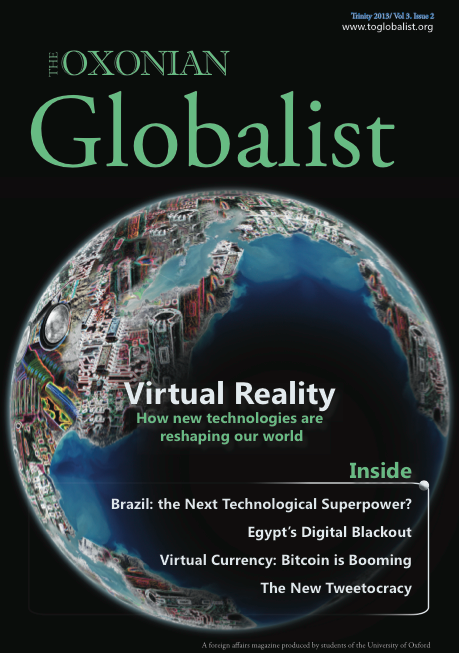
Subcomandante Marcos. The anonymity of “El Sub”, as he is affectionately known, has become an iconic image for the Zapatistas. Photo by 20 Letters via Flickr.
On New Year’s morning, 1994, groups of men and women dressed in fatigues and balaclavas and armed with AK-47s emerged out of the jungle mist from the surrounding hills. Their target was a quiet town hidden in the mountainous jungles of south-eastern Mexico. Anonymous crowds marched through the otherwise quiet streets into the central square, driving out policemen, soldiers and politicians along the way. There, from a balcony, one man, masked like all the others, addressed them: “Brothers and sisters: We are a product of 500 years of struggle… We have been denied the most elementary development, so that they can use us as cannon fodder and pillage the wealth of our country. They don’t care that we have nothing, absolutely nothing… there is no peace nor justice for us and our children. But today, we say ‘Enough is enough’”.
So, in San Cristóbal de las Casas, deep in the mountains of Mexico’s poorest state, Chiapas, began the revolt of the Ejército Zapatista de Liberación Nacional: the Zapatista Army of National Liberation, or EZLN. Triumphantly, Subcomandante Marcos, the man on the balcony, declared that they would march all the way to Mexico City, and make right the wrongs that they, and all the people of Mexico, had suffered.
This uprising was firmly grounded in a sense of history. For the remote areas surrounding San Cristóbal, much of the past 500 hundred years have been defined by conquest, slavery, war, poverty, hunger and disease. Of its population, most are indigenous Mayans, many of whom don’t even speak Spanish as a first language. In 1545, Bartolomé de las Casas became the first Bishop of Chiapas. Formerly an enthusiastic advocate of the colonisation of the Indies, he eventually turned, appalled by the mistreatment of the indigenous peoples, and became one of the first great critics of colonialism. It was in the town named after him that the Zapatista revolution began.
Mobilising a Movement
Despite the initial optimism of Marcos and the Zapatistas, their revolution was not to be: after a successful first day, the Mexican army quickly retaliated and immediately drove them back into the mountainous jungle from which they had emerged. Once the failure of their armed struggle became apparent, the Zapatistas decided to adopt a new strategy. They called a ceasefire and began to negotiate with the government, successfully producing the San Andrés Accords, a bill of rights for indigenous Mexicans. However, the President quickly withdrew his support and the original treaty was never passed by Congress. Dr Neil Harvey, an academic who has studied the Zapatistas since the uprising in 1994, suggested that the government never had the intention to implement the accords – giving rights to the key workforce in Chiapas, in a state rich in natural resources, would conflict irreconcilably with economic interests.
The failure to confirm the accords was viewed as a major betrayal, and the Zapatistas abandoned all hope in the political process, publicly rejecting political parties, right or left. Instead, they sought to find “another way” – one without seizing power – seeking instead to mobilise a Gramscian “civil society”. In doing so, they began the world’s first “post-modern revolution”.
They began to write letters and communiqués to magazines, newspapers and public figures across Mexico and the world, telling of their plight, and quickly harnessed the power of the Internet, spreading their message to people everywhere. They succeeded in generating immense support, both nationally and internationally. What began as an armed struggle involving 3,000 soldiers in a remote corner of Mexico turned into a global movement. They have been supported by any number of public figures and intellectuals across the world, from Noam Chomsky to US Senator Tom Hayden, and even by the band Rage Against The Machine.
Away from the glamour of their international success, the most important aspect of the Zapatistas is the communities themselves, of which there are an estimated 1,100 in Chiapas. They created 5 caracoles – councils of sorts – where local members take turns to govern, doing away with politicians. “It is a truly different way of doing politics”, explains Rita, a Mexican sympathiser living in Chiapas. She said that the system can be, of course, chaotic and disorganised – every member has to learn to govern as they do it – but it has its successes. For the first time in 500 years, they can self-organise and take control of their own lives, acquiring a level of autonomia. “It is about recovering their own knowledge and history – now,” Rita explained, “and not waiting one or two hundred years for a revolution”. Though still an army, their armed wing is entirely accountable to this civilian structure, and this, she said “is the most important decision the Zapatistas have ever made”; one that sets them apart from just about every other revolutionary group in the world.
The Anonymous Spokesman
Always masked and anonymous, they have become a symbol of the voiceless, mirroring those they represent. The masks actually began as a very practical measure – helping to keep them warm at a very cold time of the year. Only later did this help them become symbols. Paradoxically, it is largely thanks to their anonymity that they have achieved such recognition and fame: “When indigenous people in Mexico don’t wear masks,” Neil Harvey explained, “nobody sees them”.
Nowhere is this subversive celebrity more apparent than in the case of their mysterious and charismatic leader, Subcomandante Marcos – their post-modern answer to Che Guevara. He has never publicly removed his black ski mask. He acted as their primary spokesman to the world, with writings that are characterised by “a humorous, poetic and refreshing use of language” – with ambiguous political statements and subversive references to everyone from Shakespeare to Borges – which captured the attention of people all around the world.
Yet he is a controversial figure on both the right and the left. An investigation by the Mexican government, eager to put an end to his ironical cult of personality, decided that he was a certain Rafael Sebastián Guillén Vicente, a middle-class, university educated philosopher from northern Mexico – born of Spanish parents. This would mean that Marcos, the ultimate symbol of the resistance of the indigenous poor, is not himself one of them. There is a certain contradiction that in speaking for them, he, on some level, continues their voicelessness. While his charismatic persona has been hugely important for the Zapatistas, “the media tended to focus almost exclusively on him and his particular role and history within the movement,” Neil Harvey explained. Many became tired of him, and viewed his angry exchanges with Mexican politicians and intellectuals as little more than verbal sparring between rival macho-men, seeking attention.
Back to the Future
Fast forward to 7th May 2011, and you will find a scene reminiscent of New Years Day, 1994: crowds of masked men and women, once again emerging from the dense forest and marching down into San Cristóbal. This time, however, they were responding to a new crisis, one that has engulfed Mexico in recent years: the drug wars. The violence that started at the American border has spread to the country as a whole: in the past five years, 50,000 people have been killed. This has not been a battle restricted to rival gangs; rather, it is a war in which the victims are ordinary men, women or children, whose “only fault,” Marcos wrote, “is having been born or lived in a country badly governed by legal and illegal groups, thirsty for war, death and destruction”. “The Zapatista uprising was a warning,” Rita explained, “that if things did not change, we would end up where we are now.”
The Zapatista communities have in fact experienced low-intensity warfare ever since 1994. Paramilitary groups – funded by ranchers and landowners, trained by the army, and peopled by locals, mainly indigenous members of the same villages as their Zapatistas enemies – have been in a sort of proxy-war with autonomous communities. The army, far from stemming the violence, has exacerbated it, and where necessary given the paramilitary groups a leg up. The most shocking example of violence was the Acteal Massacre in 1997, in which 45 people – mainly members of a pacifist group – were slaughtered at a prayer meeting. Recently, an attempt to set up an autonomous school by one of the governing caracoles was thwarted when it was attacked. The violence “has really restricted what could have been more effective changes within the communities,” suggested Neil Harvey.
Despite this, other towns and villages across Mexico have responded to the Zapatistas’ call for autonomy and la otra, “the other way”. In 2006, San Juan Copala, in neighbouring Oaxaca, declared its independence. It was similarly assaulted by local paramilitary groups – again covertly aided by the army – who began such a sustained campaign of violence against it, documented in Channel 4’s Unreported World, that in 2010 the whole town had to be evacuated. Cherán, in central Mexico, similarly decided it was fed up with local gangsters, loggers and politicians alike, and threw them all out, setting up barricades and declaring its independence.
Return of the Zapatistas?
When the Zapatistas once again marched into San Cristobal in May last year, many were surprised to see them. It was their first major appearance in 5 years. Marcos, having become aware of the tension his celebrity was causing, had stepped out of the limelight. Negotiations with the government have remained at a standstill for the better part of 15 years, and their “other way”, despite some success, has not taken the country by storm, as they once hoped it would. Crucially, the San Andres accords remain unimplemented. Their initial dream of revolution for all Mexico is no longer a possibility, a source of some embarrassment to them. Rita suggested that for many they are a thing of the past: “People say to me, ‘Oh yeah, the Zapatistas – what happened to them?’.”
It therefore remains to be seen what will become of the Zapatistas. Yet for all of their failings, they have shown remarkable resilience. They survived the initial onslaught by the army, and resisted the subsequent terror of paramilitaries. They continue to do good work in the communities where they operate – evidenced by the thousands of NGOs and aid workers who flock to Chiapas to witness this revolution in action. Their initial call to arms, a response to the pressures of global capitalism and modern-day colonialism, struck a chord around the world, and groups in North America, Europe and elsewhere seek to emulate them. Maybe their revolution hasn’t reached the scale they once hoped it would, or maybe it has surpassed it. The ending of the tale of the Zapatistas is yet to be resolved. Or maybe it never will be – after all, it is post-modern.



